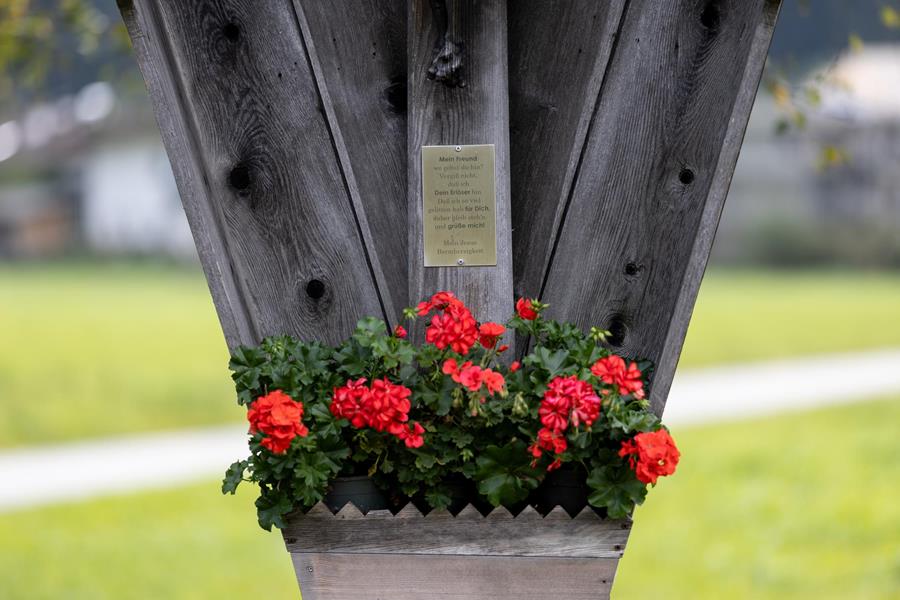Crosses along the trails accompany us step by step during our walks and hikes. But how did the cross end up by the roadside, and what significance does it hold for the passersby?

A good thought, a small request, a prayer of thanks – numerous crosses along walking and hiking paths, on house facades, and at yard entrances invite a short pause. Already in pre-Christian times, sacred objects were erected at dangerous places or strategic locations, such as crossroads, borderlines, hilltops, or mountain ridges.
To guide and protect, to pause and lead – as varied as their locations, so different and symbolic was their meaning: Where should I go? Where should I turn? Who protects me on my journey? Doubts and questions that accompany human life – just as the crosses along the way do. Reflecting on one’s life decisions, entrusting them silently to the Crucified, realizing that our journey, with all its twists and unpredictabilities, can be a pilgrimage from earth to heaven...
One doesn’t need to be a particularly devout person to feel the strength of these simple, often wooden-carved crosses. Sometimes, however, they also point to dramatic places where murder and violence have occurred, or where people have lost their lives under other tragic circumstances.
Connection Between Heaven and Earth

The sacred form of the cross has been viewed for centuries as something magical, something very powerful. Just like in many other cultures, the connection between a horizontal and a vertical line symbolizes in Christianity the connection between heaven and earth, between the divine and the human; for Christianity, it is still the most important symbol, pointing to the salvation of humanity from suffering and death through Jesus Christ.
From the 14th century onward, crosses were erected throughout the Alpine region. The figures of Christ were often carved from Swiss stone pine wood, and the cross structures were made of larch wood. They gained particular prominence during the Counter-Reformation from the 16th century.
From the 19th century onwards, a diamond-shaped panel was often added as a back wall to protect the corpus from weather influences. This also created space for additional Christian symbols, such as the Sacred Heart of Jesus, the chalice with the Eucharist, or the instruments of the Passion.
Each wayside cross reflects the style of its time and bears witness to the deep piety of its creators. Their significance has not been lost to this day: they are lovingly cared for, adorned with flowers, renovated, and maintained by people who still hold these crosses dear.
Witnesses of the Past and Present
One of the oldest wayside crosses in the holiday area around Sterzing is probably the cross at the “Pfitscher” in the Ridnauntal Valley, which dates back to around 1400. It is hard to imagine how many passersby have walked past this small wooden cross in the past 600 years...
Anyone walking with open eyes and an open heart feels the power emanating from the wayside crosses. As witnesses of the past and present, they tell a lot about the people who live here, their worries and fears, and their attempts to find paths out of difficult situations. Thus, wayside crosses become not only decorative elements by the roadside but true spiritual signposts on our life journey.
Text: Text: Barbara Felizetti Sorg